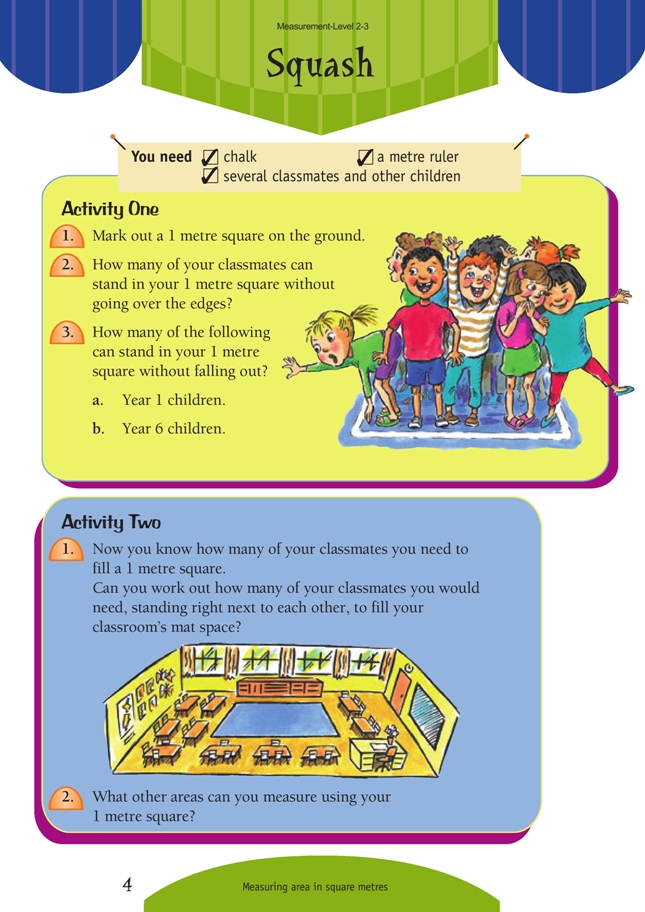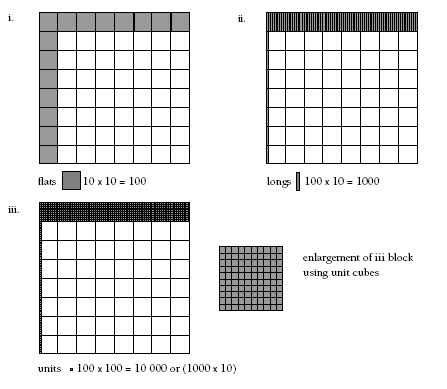This is a level 2 measurement strand activity from the Figure It Out series.
A PDF of the student activity is included.
Click on the image to enlarge it. Click again to close. Download PDF (203 KB)
measure an area in square metres
metre ruler
chalk
FIO, Level 2-3, Measurement, Squash, page 4
Although measurement of area is not explicitly stated in the mathematics curriculum achievement objectives, it is implied through the work with lengths and volumes. The area or array model is vital to the early development of multiplication and division and has other connections to finding all the outcomes of an event in probability.
A 1 metre square is a deceptively large unit of area, which will become apparent to students when they draw or construct one with newspaper and tape. Students can be asked questions such as, “How many flat place value blocks would fit in a 1 metre square? (10 x 10 = 100) How many longs? (100 x 10 = 1000) How many unit cubes? (1000 x 10 or 100 x 100 = 10 000)” This helps students to build up their working concept of a 1 metre square as well as representing larger place values. The diagrams below show this process:
Usually about 12 students of middle primary school age can stand comfortably in a 1 metre square. Using this result to find out how many standing students will fit in the classroom requires students to calculate the classroom area. Encourage students to use multiplication strategies (see the notes for page 2) rather than one-by-one counting by moving a 1 metre square model around.
As an additional activity, you could focus on student desks. They come in a variety of sizes and shapes, but generally a student sitting at an isolated desk needs nearly 1 square metre of space. Moving desks together saves space as two students seated at two facing desks that are joined need only about 1.5 square metres of floor area. Let students discover this result and then ask them to design a desk arrangement that maximises space for movement and for a mat area, book corner, etc.
Answers to Activity
Activity One
Answers will vary. Usually about 12 students of middle primary school age will fit in a 1 m square.
Activity Two
Answers will vary.

